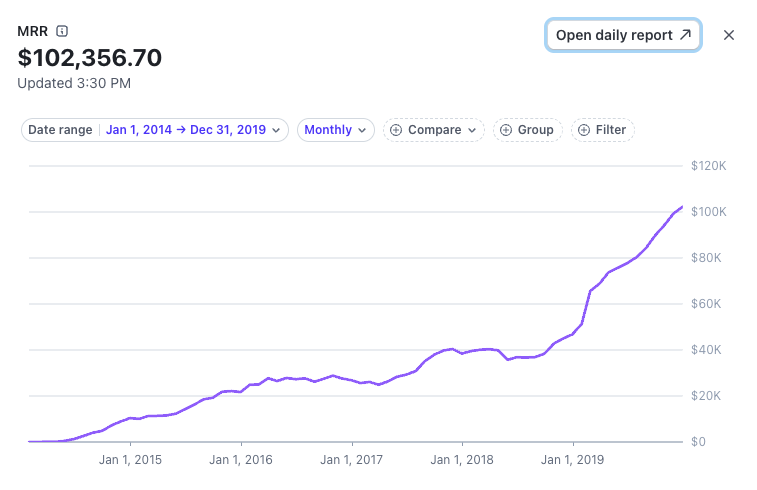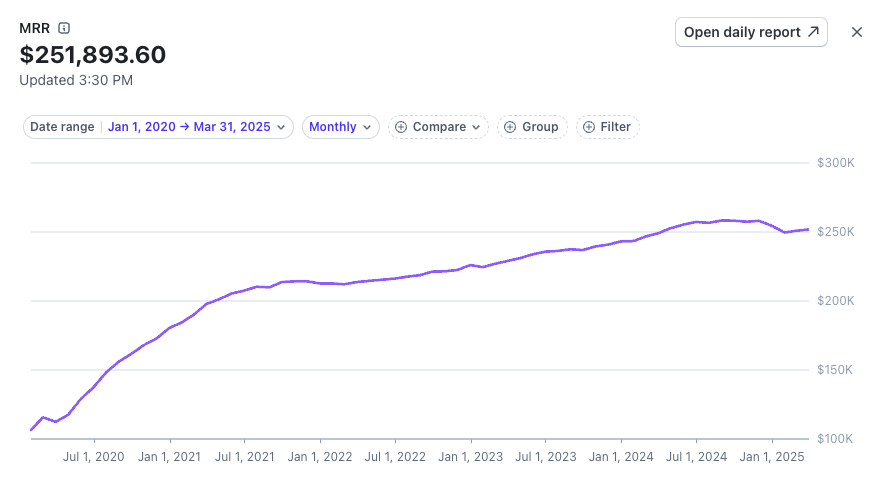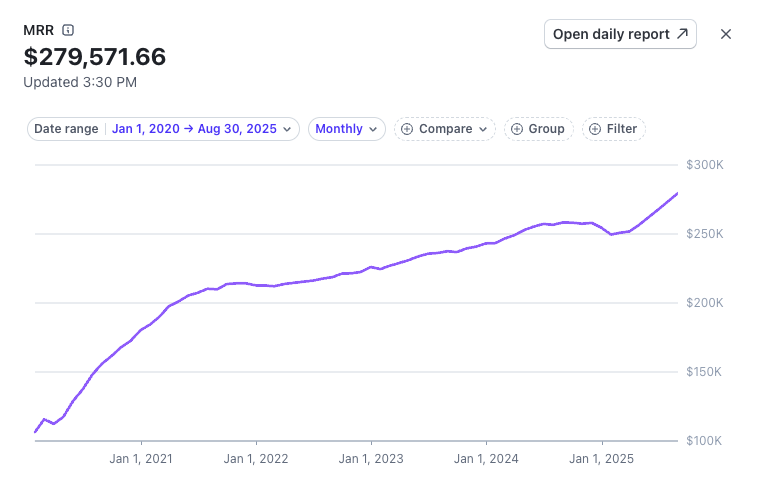12 years, $3.3M, profitable, bootstrapped
I don’t know any satisfied business owners. We all look forward at the next set of problems to be solved. In a way, that’s what we thrive on. The challenge of conquering the unconquerable. Solving problems that seem impossible. That others would call you crazy for even trying. At least that’s how I feel most days. Always looking forward, always taking on the next mountain. Operating in this manner, so long as you have boundaries, makes the world a lot smaller, a lot more enjoyable.
You wake up each day and knock off the next challenge, focusing just on what’s in front of you. Of course, the big picture is always there, but on an average Thursday you are happy to just take on the next piece of the puzzle. I think that’s what has kept me going all these years (13 to be exact, or 18 if you count my other businesses). It’s knowing that you can wake up, conquer a problem, and be done for the day.
Of course it didn’t start off like that. In the beginning it was a plethora of problems all at once. When we started Interact it was the first software of its kind (a quiz builder), and there was nowhere to look for advice or guidance. We couldn’t even market it as “A better version of (blank)” because there was no (blank) to begin with. So every day we built a thing that didn’t exist, that we didn’t know how to market, that we didn’t know how to build.
People like to romanticize the early days of businesses. If you read Shoe Dog, or the Amazon Story, or Made in America, they look back fondly on those first years of struggle. But I don’t feel that way. I feel like it was hard, and the satisfaction of being able to knock off one problem at a time wasn’t there because for every problem you solved, 5 others would appear.
For us it went on like that for many years, 5 to be exact, and then we finally had a system in place where the business was mostly operating okay and we could focus on solving one problem at at time. In reality, we could always only solve one problem at a time, but it felt like we had to solve all the problems at a time because so many things needed to be worked on.
As things started to click into place, growth also accelerated, and it was nice. I put the chart below, but in words, we basically had sputtering growth for a few years, then it clicked in and took off. Right around the end of 2018 we finally hit our stride, and through 2019 it was great.
Then the pandemic hit, and it reset our business. Long story short, a lot of the customers we served went out of business, and a lot of the way we did go to market stopped working because of broader economic shifts. Once again it felt like every day there were more problems than could be fixed, and the issues kept piling up. But this second time around we handled it a little bit better. We were more methodical in continuing to tackle one problem at a time, even when it felt like everything was crashing down around us. We worked on improving our speed and efficiency of solving problems, systemizing initiatives when they were successful, and bringing in more talent to help us.
In April 2025 it started to even out again, the number of problems to be solved began to become more manageable. We found new customer types that were rising out of the post pandemic slump. We found new go to market motions that work in 2025, and we are more methodical about how we run programs and scale initiatives. Basically more focus on what works and less waste. And it’s working, growth has picked back up to where we left off for the most part in 2019, and we feel more confident than we did back then, because we have a better pulse on what’s working to drive growth than we did before.
Moving forward we are focused on decreasing the cycle time of solving problems that lead to growth. Committed to constant auditing of what we are doing and whether it contributes to growth. And keeping in close communication with the market as needs may shift. I don’t think there’s any way to predict the future, or avoid the slow times. And honestly, there are lessons to be learned from the slow times that are not obvious when it seems like everything is working and all you touch turns to gold. I can say though, that building profitably is the way to go, because our company would never have made it if we weren’t self-sufficient and profitable through the last 12 years.



